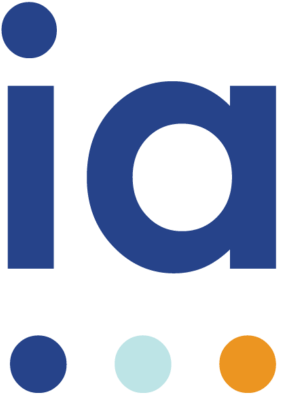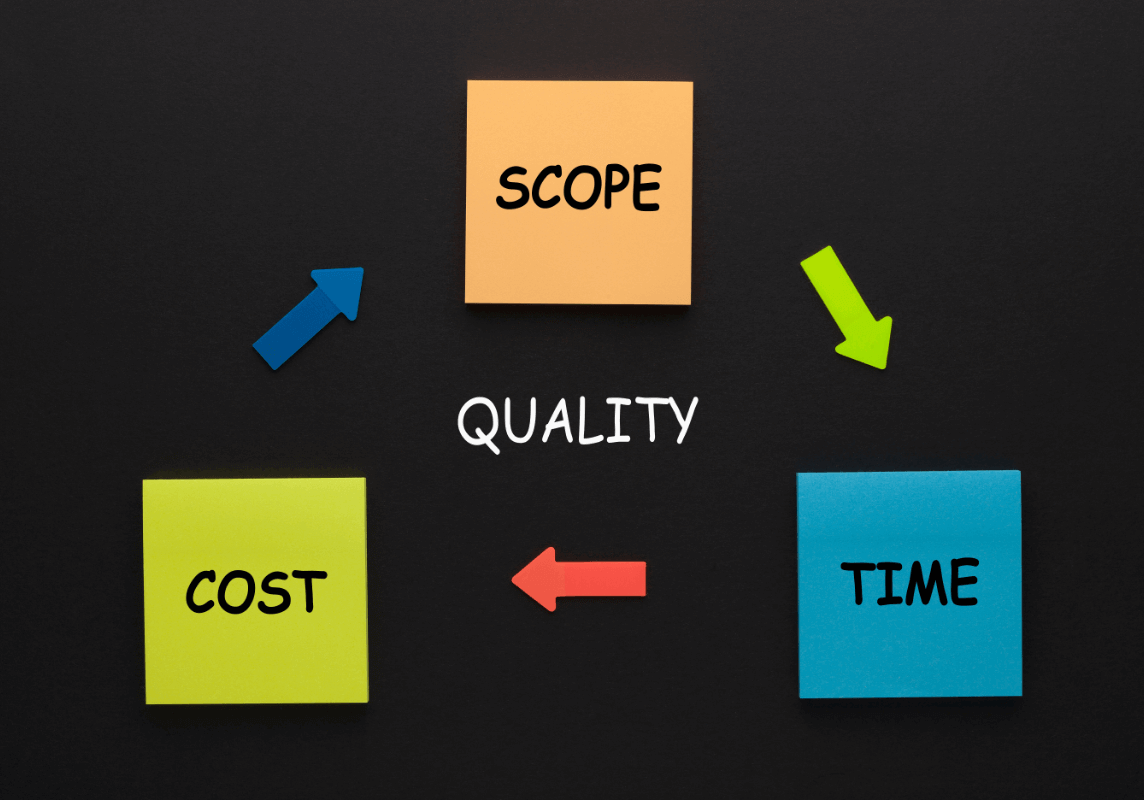Continuous Improvement, Project Execution
If you have ever taken any project management courses or even read any articles on project management, you have heard the saying, “You can have it good, fast, or cheap. Pick two.” The saying has been attributed to software engineers informing stakeholders or project managers the reality of what they can deliver successfully. I like to think it doesn’t matter if the saying originated with software engineers, as the concepts apply to any project whether that includes building a bridge, delivering a new software product, deploying a new system, or even designing and implementing a new operating model.
The Iron Triangle
In project management methodology, there is a common image that is shown where a triangle includes Scope, Cost, and Time on each side. The triangle is meant to show the relationships between all these targets and on project delivery quality. Since there is a relationship, you cannot impact one aspect without affecting at least one of the other areas.
For example, imagine you need to deploy a new payroll application for a go-live at the beginning of the new year. Like many payroll leaders, you prefer a new year go-live to avoid running W2 reporting from an old legacy system in a new payroll system. Instead, you can start brand new and clean with the new system in the new year, just like new years are supposed to be! You have planned out the resources needed, the budget, signed contracts, and even planned for how many processes should change versus lifting and shifting behaviors into a new system.
And then, something changes, like…perhaps your leadership needs you to cut the budget. If you cut the budget that was based on the original timeline and scope, you are now faced with a quandary. Something has to give. Perhaps you can’t do as many process improvements or add on as many supplementary services. If scope can’t be changed and budget is cut, then perhaps the timeline must be extended out or shortened. Regardless, you can’t have it cheaper, shorter, and with the same scope and expect the same quality result that you would get if you were in full control of the original parameters of the project.
The constraints of reality
For many of the client projects I have been a part of, HR departments end up having significant demands placed on them that include constrained budgets and resources. In fact, I have known very few HR departments who are even lucky enough to have their own dedicated project managers. Generally, HR departments have certain leaders playing dual roles of their normal day-to-day responsibilities and project management duties. Other times, HR projects may get an assigned resource from a PMO to help navigate an HR systems implementation. But usually, they are left with already constrained resources – which as you already guessing will play a role in how much scope or timeframe something can realistically be delivered.
So, what now?
I like to think I am pragmatic. There are valid reasons for changes in a project (Hello, COVID Year). There are also things that just happen in a project. Sometimes, we didn’t do a great job at planning. Often, we may not have connected all the interdependencies on a project, and we start to learn about more “gotcha” moments throughout the time.
I would also argue that the Iron Triangle, or constraints of project management, only tell one story about project delivery. We could build a project charter that says we will deliver a certain outcome, within the target budget and timeline, and then we learn that it doesn’t really move the dial on our customer happiness. Quality (the ultimate outcome) is like the adage of beauty is in the eye of the beholder. If we don’t do a great job at planning what our successful outcome criteria is, we may deliver a miss, no matter how “successful” the project plan was.
You must remember this
One thing that I hope leaders consider is that when you are tasked to manage project, no matter how complex or simple, thoughtfully consider how you will respond to changes. The role of the project manager is to keep integrity of the project whole. Consider in your planning how you would mitigate risks, as well as how you will influence changes that may arise. This may be as simple as prioritizing scope elements, cutting out unnecessary tasks that do not impact the critical path, releasing some deliverables in different phases, or even leveraging resources in less costly ways.
Thinking through these ideas, coupled with effective planning, means you can have better conversations and goals for your projects – no matter what your triangle looks like.






